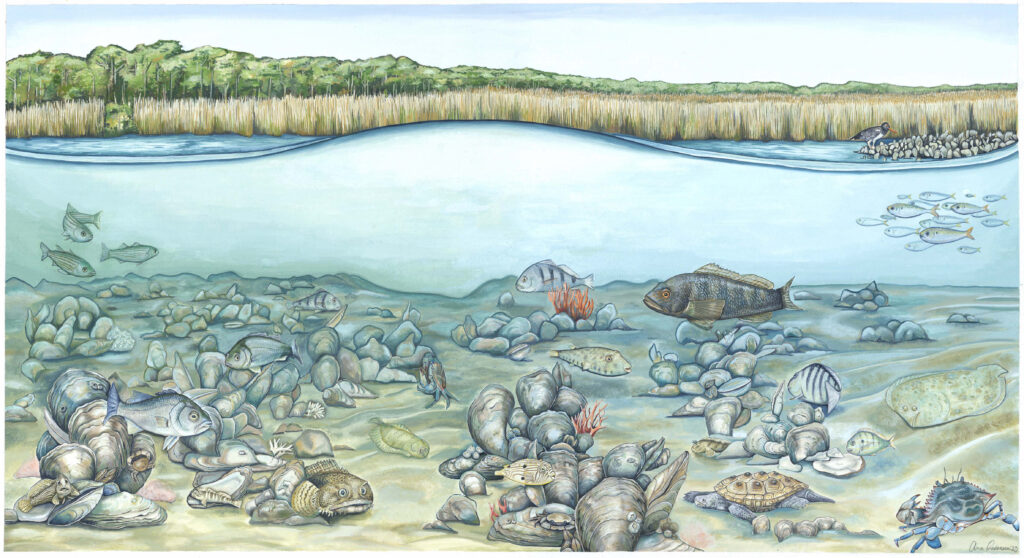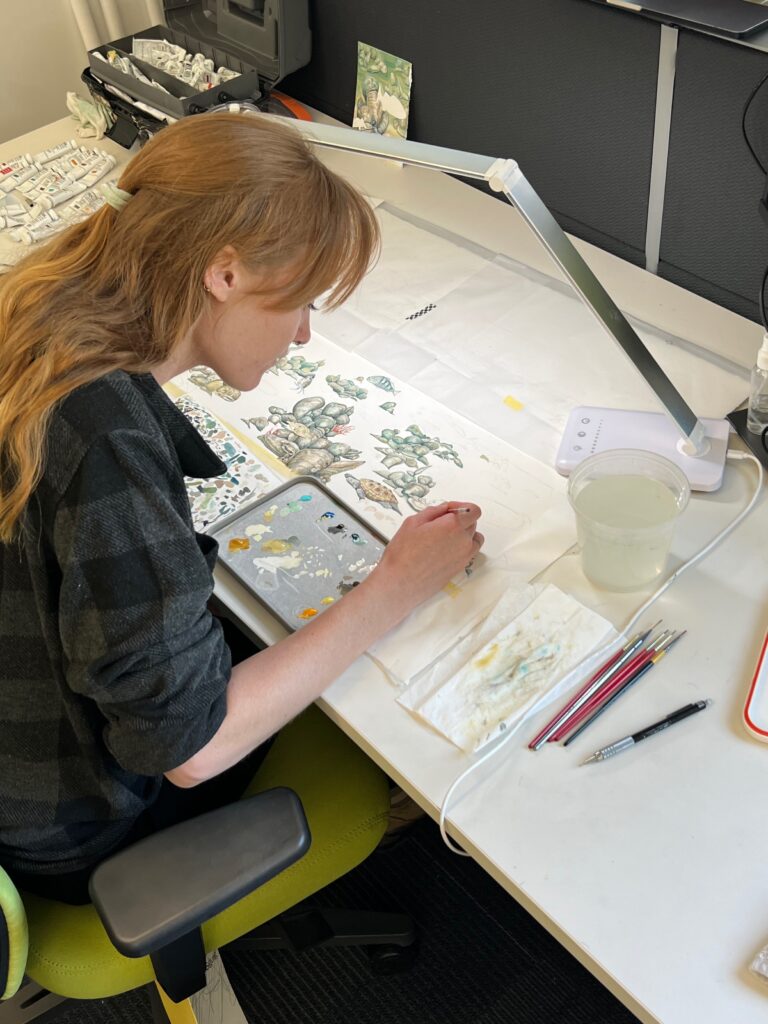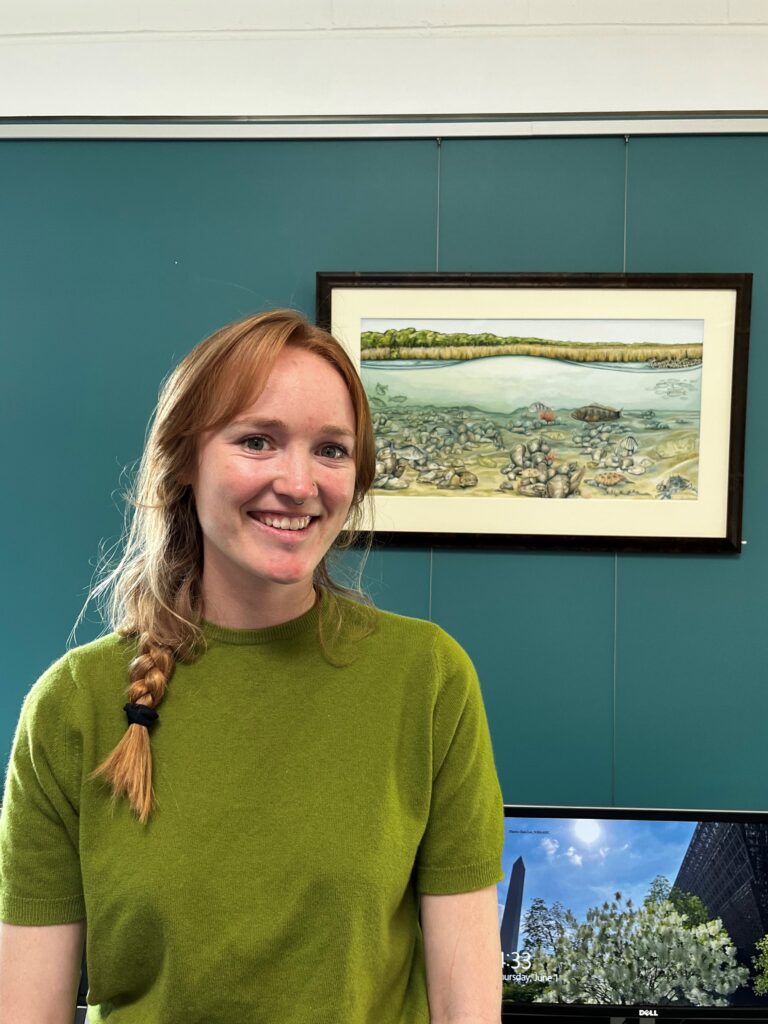by Anna Davis

Though the Smithsonian is home to both mind-bending art and groundbreaking science, these disciplines all too often appear as opposites. The myth of “analytical, left-brained” scientists and “creative, right-brained” artists creates a false dichotomy. However, art is an increasingly important way to communicate complex scientific ideas.
This spring, the Smithsonian Environmental Research Center (SERC) sponsored its first science illustration internship and experienced the power of bridging the gap between art and science. Anna Pedersen joined SERC for an 11-week internship, thanks to generous funding from the Maxwell/Hanrahan Foundation. Her intern project centered on creating a beautiful and original painting that helps communicate SERC science.
Pedersen’s background in both scientific studies and illustration poised her well for this task. She pursued her undergraduate degree in conservation at the University of California, Berkeley. After college she earned a master’s certificate in science illustration from California State University, Monterey Bay.
Working at SERC offered her a new canvas, as she prepared to depict the underwater animals of Chesapeake Bay.
“Being from California, I wasn’t entirely familiar with many of them before coming out here,” she said. “It was amazing to get to surround myself and learn about all of these species.”
During her internship, Pedersen worked with Matt Ogburn, senior scientist for SERC’s Fisheries Conservation Lab, and Alison Cawood, director of public engagement at SERC.
Pedersen benefited from working closely with the Fisheries Conservation Lab. She regularly went into the field to observe the species she would feature in her final product, a painting of life in Chesapeake oyster reefs. It was an important part of her artistic process to ensure her depictions of animals were accurate.
“If I ever had questions about fish anatomy or identification, there was always someone to ask and get feedback on what I was working on,” she said. “It was a really invaluable and unique aspect of this internship.”
Her final piece was a 14”x26” gouache painting that shows the many organisms that rely on Chesapeake oyster reefs for food and habitat. The painting creatively demonstrates how reef-dwelling organisms change, from the Bay’s less-salty tributaries to its mouth near the Atlantic Ocean.
While the original painting now hangs in SERC’s Mathias Lab, a digitized version will help expand its use in public engagement. Plans are underway to create online interactive resources and printed posters featuring Anna’s artwork, to share with educators and students. In addition, we used some of her preliminary sketches to create a coloring and activity book, featuring crabs, fish and other oyster reef residents. Even the youngest SERC visitors will be able to learn from Pedersen’s work.
The science illustration internship offered a mutually beneficial experience for both Pedersen and SERC. We hope to continue sponsoring science illustration interns at SERC in the future, and further explore the powerful intersection of science and art.
If you’re interested in exploring more of Anna Pedersen’s artwork, visit her website at www.saltyearthstudios.com



